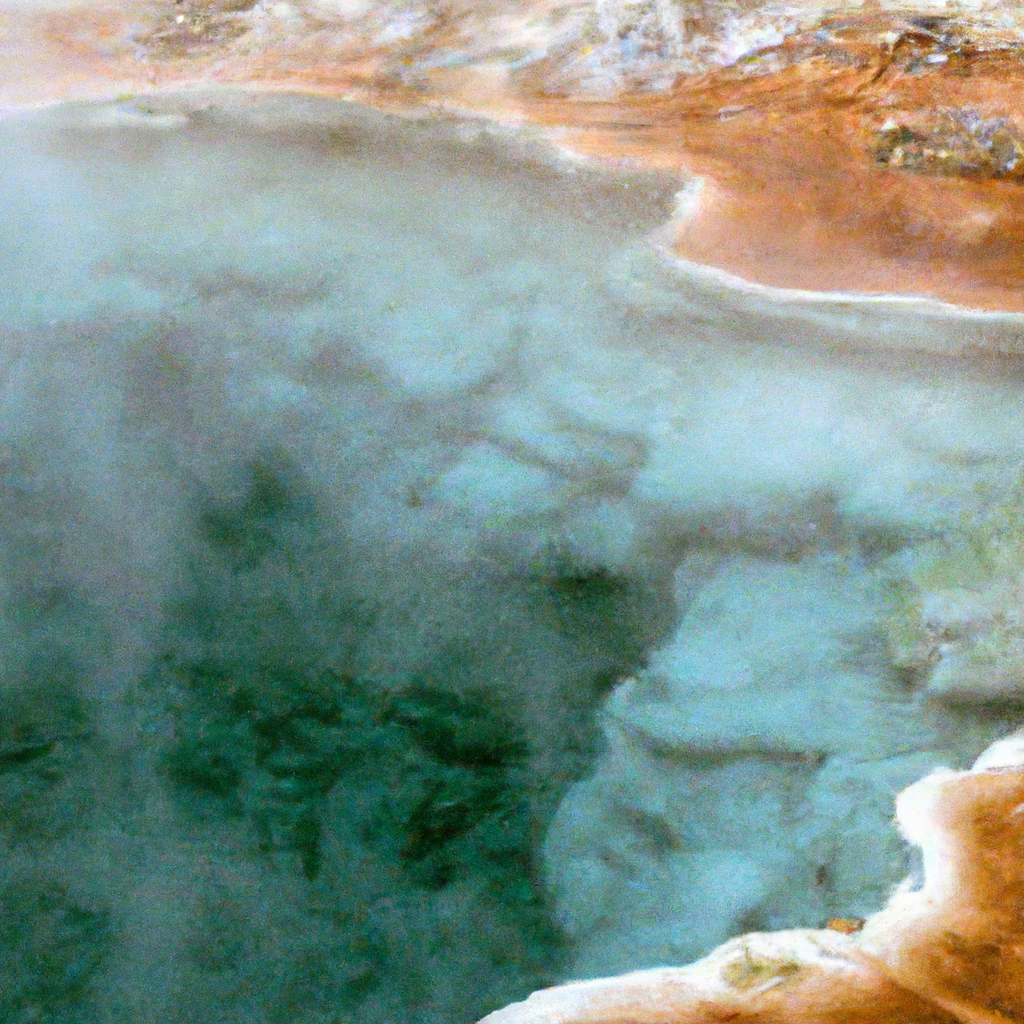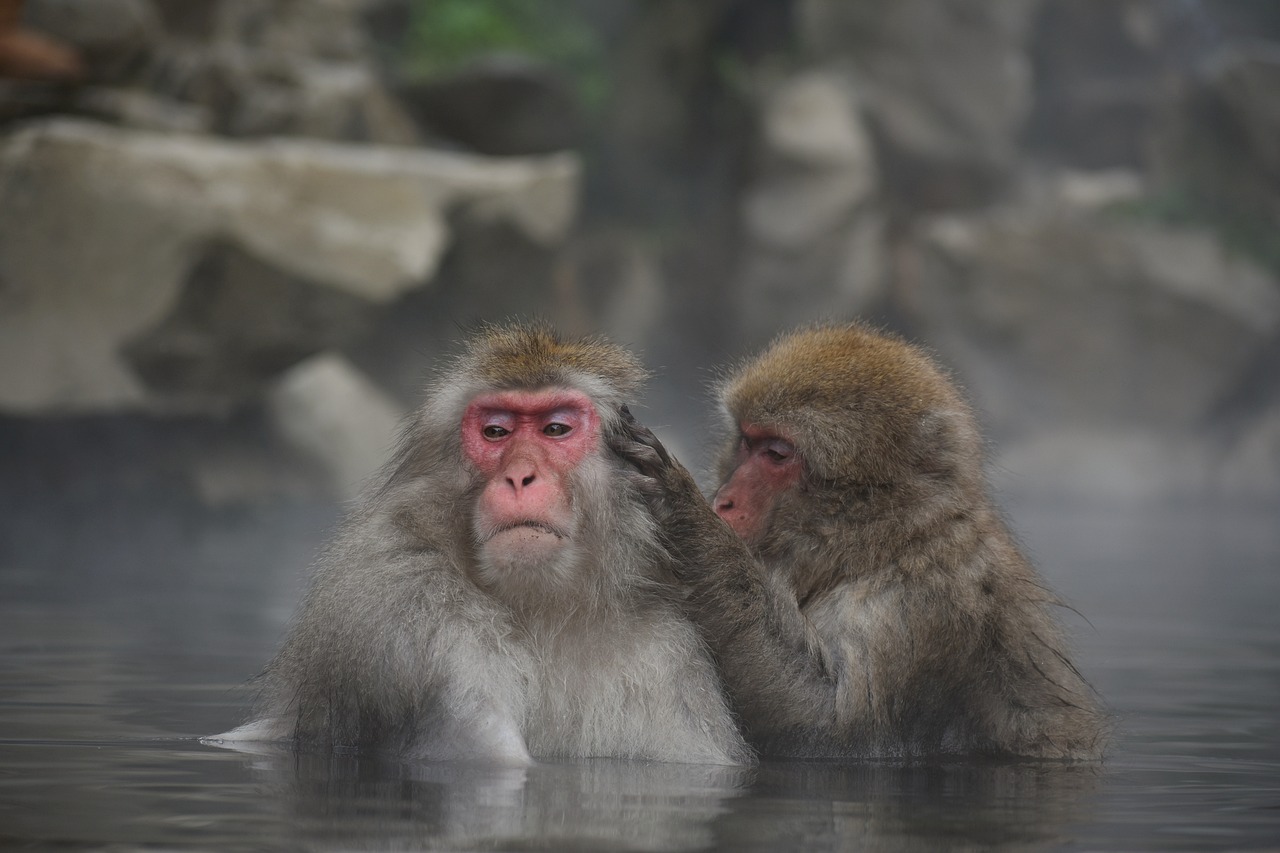Imagine taking a soothing dip in a natural hot spring, its warm waters enveloping you like a gentle embrace. Now picture doing this at one of the oldest hot springs in the United States. These incredible geothermal wonders have withstood the test of time, carrying not only the heat of the earth, but also the fascinating stories of their origins. From healing properties to historical significance, these ancient hot springs continue to captivate and amaze visitors from all corners of the globe. So, put on your bathing suit and get ready to dive into the intriguing tales of the oldest known hot springs in the U.S.
1/the-oldest-known-hot-springs-in-the-us-and-their-stories-682x1024.jpg" title="The Oldest Known Hot Springs In The U.S. And Their Stories" alt="The Oldest Known Hot Springs In The U.S. And Their Stories" style="max-height: 500px; max-width: 100%;" />
Native American Use of Hot Springs
Ancient Rituals and Spiritual Healing
Hot springs have long held great significance for Native American tribes across the United States. For centuries, these natural wonders have been revered as sacred and powerful sources of healing and spiritual renewal. Native Americans believed that hot springs were gateways to the spiritual realm, places where they could connect with their ancestors and seek guidance from the divine. The rituals performed at these hot springs involved purification and cleansing of both the body and the soul. By immersing themselves in the warm, mineral-rich waters, they believed that they could rid themselves of negative energy and ailments, promoting harmony and balance within themselves and their communities.
Bathing and Cleansing Traditions
Bathing in hot springs was not only a spiritual practice for Native Americans but also an essential part of their daily lives. These natural hot tubs provided them with a space to unwind, relax, and cleanse themselves physically and mentally. The healing properties of the hot springs’ mineral-rich waters were believed to alleviate various ailments, including muscle and joint pain, skin conditions, and respiratory issues. Native Americans would bathe individually or as a community, a social gathering that fostered unity and shared traditions.
Ancient Structures and Artifacts
Evidence of the Native American use of hot springs can be found in the ancient structures and artifacts that have been discovered near these natural wonders. Archaeological excavations have unearthed ceremonial sites, sweat lodges, and remnants of ancient settlements near hot springs. These findings offer a glimpse into the rich cultural and historical significance that hot springs held for Native American communities. The structures and artifacts provide valuable insights into their intricate knowledge of the natural world, their deep spiritual beliefs, and the complex rituals they practiced. Today, these archaeological treasures serve as a testament to the enduring legacy of Native American culture and the reverence they held for hot springs.
European Discovery and Exploration
Early Expeditions to Hot Springs
The arrival of European explorers and settlers in North America brought about a new era in the history of hot springs. As these explorers ventured into uncharted territories, they encountered the natural wonders of hot springs for the first time. Accounts of early explorers like Hernando de Soto, who encountered hot springs in what is now Arkansas, shed light on the European fascination with these geothermal wonders. These early expeditions sparked curiosity and laid the foundation for a deeper understanding and exploration of hot springs.
Europeans Settling near Hot Springs
As European settlers began to establish permanent settlements in North America, they sought out locations near hot springs. These settlers recognized the potential economic and medicinal value of the geothermal waters. European settlers established towns and resorts near hot springs, capitalizing on their perceived healing properties and attracting visitors from far and wide. The presence of Europeans near hot springs brought about a mingling of Native American and European cultures, creating a complex tapestry of interactions, conflicts, and cooperation.
Conflict and Cooperation with Native Americans
The arrival of European settlers near hot springs was not without its challenges. The competing interests and cultural differences between Native Americans and Europeans often led to conflicts over land ownership and resource utilization. However, there were also instances of cooperation and cultural exchange. Native Americans shared their traditional knowledge of the hot springs’ healing properties and spiritual significance with the European settlers, while the settlers brought new technologies and infrastructure to enhance the accessibility and utilization of hot springs. These interactions, though complex and at times problematic, played a significant role in shaping the development and understanding of hot springs in America.
Hot Springs as Health Resorts
The Rise of Hot Springs as Tourist Attractions
During the 19th century, hot springs gained popularity as destinations for health and leisure. The discovery of the therapeutic benefits of mineral-rich hot springs attracted people from all walks of life, including the wealthy and famous. News of the healing properties of hot springs spread far and wide, and people flocked to these natural wonders in search of relief from various ailments. As a result, hot springs became renowned as health resorts, attracting visitors who believed in the healing powers of the geothermal waters.
Hot Springs National Park
The establishment of Hot Springs National Park in 1832 further solidified the reputation of hot springs as premier tourist attractions. Hot Springs National Park, located in Arkansas, became the first federally protected area in the United States. The national park preserved the natural beauty and historical significance of the area, ensuring that future generations could continue to enjoy and appreciate hot springs. Today, Hot Springs National Park remains a popular destination for nature enthusiasts, history buffs, and those seeking rejuvenation in the healing waters.
Influence of Medical Professionals
The endorsement of hot springs’ therapeutic properties by medical professionals during the 19th and early 20th centuries further propelled their popularity. Doctors and scientists began to study and document the physiological effects of hot springs, prescribing “taking the waters” as a remedy for various ailments. The medical community’s validation of hot springs as a legitimate form of therapy attracted a wider range of visitors, including those seeking not only physical healing but also relaxation and stress relief. As a result, specialized medical facilities and spas were established near hot springs, offering a range of treatments and therapies to cater to the diverse needs of visitors.
Historical Sites and Landmarks
Bathhouse Row and the Grand Promenade
Bathhouse Row, located in Hot Springs National Park, is a historic district that showcases the architectural marvels of the 19th and early 20th centuries. The row comprises a collection of beautifully preserved bathhouses, each with its unique design and style. The architectural grandeur of Bathhouse Row is a testament to the popularity and significance of hot springs during its heyday. The Grand Promenade, a scenic walkway that stretches along the base of the Hot Springs Mountain, offers visitors breathtaking views of these architectural gems and a glimpse into the area’s rich history.
Famous Hotels and Spas
Hot springs have long been associated with luxury and opulence, attracting the attention of prominent individuals and celebrities. Many famous hotels and spas were established near hot springs, offering lavish accommodations and world-class amenities to cater to the elite. These establishments became symbols of elegance and sophistication, further enhancing the allure of hot springs as desirable destinations. The historic Arlington Hotel in Hot Springs, Arkansas, and the Ahwahnee Hotel near the hot springs in Yosemite National Park are just a few examples of the prestigious hotels that emerged in hot spring regions.
Architecture and Preservation Efforts
Preserving the architectural heritage of hot spring regions has been an ongoing effort to ensure the historical value of these sites is protected. Through restoration projects and architectural preservation efforts, the unique architectural styles and features of these structures have been maintained. Visitors can still admire the intricate details, grand facades, and ornate interiors that reflect the grandeur and elegance of a bygone era. The preservation of these historic landmarks allows visitors to step back in time and appreciate the rich history and cultural significance associated with hot springs.
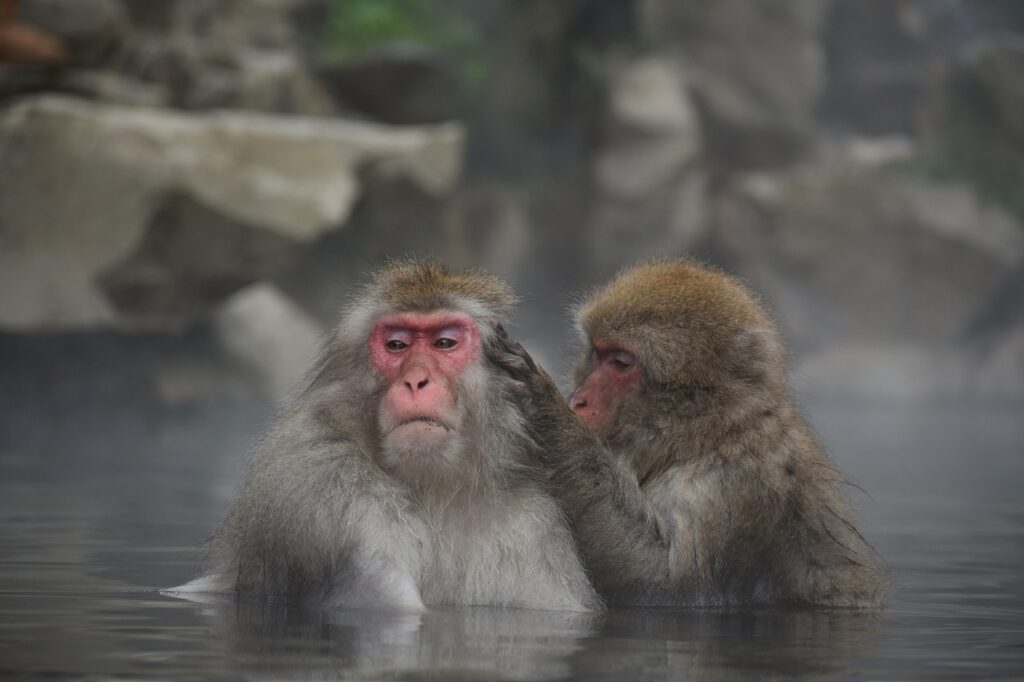
Geological Origins of Hot Springs
Formation of Geological Hot Zones
Hot springs are a result of the geological processes occurring deep within the Earth’s crust. The formation of hot zones where geothermal energy and water interact is key to the creation of hot springs. These hot zones are typically located near tectonic plate boundaries or volcanic areas, where the intense heat from the Earth’s molten core and the movement of rock formations contribute to the heating of subsurface water reservoirs.
Natural Processes and Underground Aquifers
Hot springs are fed by underground water reservoirs known as aquifers. Rainwater or snowmelt percolates through the ground, seeping into the Earth’s crevices and cracks. As the water descends to deeper layers, it comes into contact with the scorching hot rocks and magma, absorbing heat and minerals along the way. This heated water then rises back to the surface, emerging as a hot spring. The mineral content of the water is a result of the dissolved minerals it picks up during its underground journey.
Geothermal Energy and Hot Springs
The heat source for hot springs is geothermal energy, which is derived from the Earth’s internal heat. The underlying magma chambers and geothermal reservoirs beneath the Earth’s surface act as sources of heat, warming the water trapped within the aquifers. As the heated water rises to the surface, it creates the bubbling and gushing hot springs that we see. The geothermal energy associated with hot springs has not only provided humans with a natural source of warm water but has also been harnessed to generate electricity in geothermal power plants.
Hot Springs’ Impact on Local Communities
Economic Development and Job Opportunities
Hot springs have played a significant role in stimulating economic development in local communities. The influx of tourists seeking relaxation and healing has resulted in the growth of various industries, including hospitality, tourism, and entertainment. Hotels, restaurants, and shops have sprung up near hot springs, providing job opportunities to local residents. Additionally, the demand for guided tours, spa services, and outdoor recreational activities has created a thriving economy, uplifting the livelihoods of the surrounding communities.
Cultural and Social Significance
Hot springs hold deep cultural and social significance for the communities that reside near them. These geothermal wonders often become focal points for cultural events, celebrations, and festivals. Local traditions and folklore surrounding hot springs are passed down through generations, keeping alive the customs and beliefs associated with these natural wonders. Hot springs also serve as meeting places for locals and tourists, fostering a sense of community and creating opportunities for cultural exchange. The interaction between different cultures and perspectives enriches the social fabric of these communities.
Environmental Conservation
The conservation and protection of hot spring ecosystems and their surrounding natural environments are crucial for their long-term sustainability. Many hot springs are located in delicate ecosystems that support a diverse range of flora and fauna, some of which may be endemic or endangered. Efforts to preserve and maintain the ecological balance of these areas involve careful monitoring of water quality, regulation of visitor access, and implementation of sustainable practices. By prioritizing environmental conservation, local communities can ensure that future generations can continue to enjoy the beauty and benefits of hot springs.
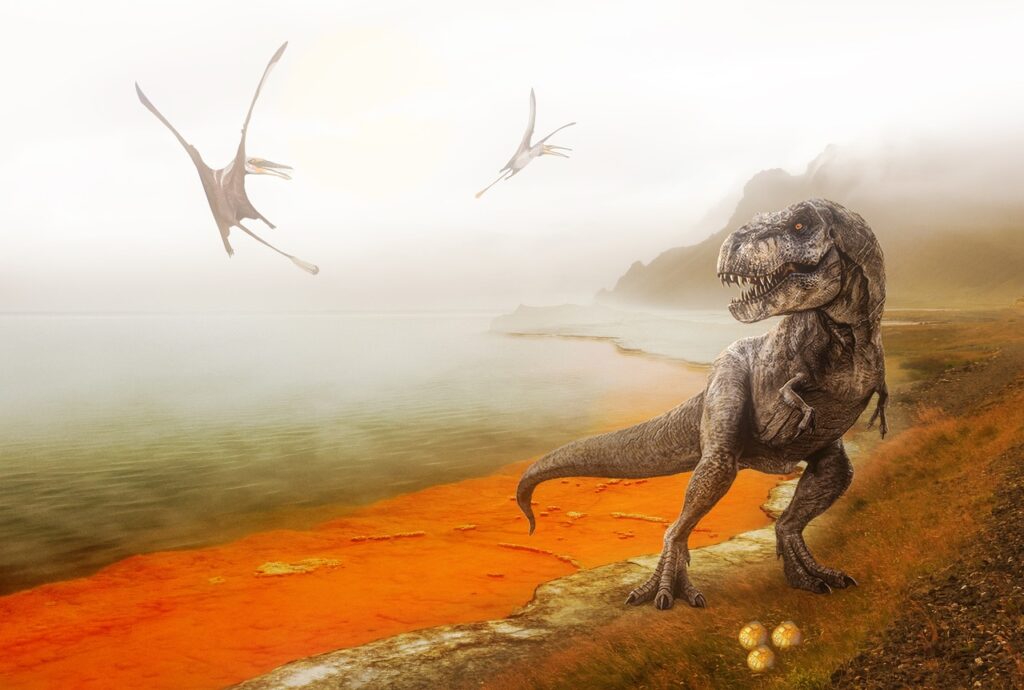
Famous and Noteworthy Hot Springs
Yellowstone National Park’s Hot Springs
Yellowstone National Park in Wyoming is renowned for its impressive collection of hot springs and geothermal features. The park boasts iconic hot springs such as the Grand Prismatic Spring, known for its vibrant colors and massive size. Other notable hot springs in Yellowstone include the Norris Geyser Basin and the Mammoth Hot Springs. These hot springs serve as popular attractions for visitors who are captivated by their natural beauty and the geothermal wonders they offer.
Hot Springs in California’s Geothermal Belt
California’s Geothermal Belt spans a vast area along the state’s eastern side, where numerous hot springs can be found. The city of Calistoga, known for its hot springs, offers visitors the opportunity to unwind in geothermal mineral waters while surrounded by picturesque landscapes. Harbin Hot Springs, located north of San Francisco, is another renowned hot spring destination that offers both natural and developed hot pools for visitors to enjoy. These hot springs in California are not only beloved by tourists but are also valued by locals for their therapeutic qualities and the sense of tranquility they provide.
Hot Springs in Arkansas and Wyoming
Arkansas is home to some of the most popular and historic hot springs in the United States. Hot Springs, located in Hot Springs National Park, is a top destination for those seeking relaxation and healing. Visitors can indulge in thermal baths, spa treatments, and explore the rich history of the area. In Wyoming, Thermopolis is renowned for its hot springs, including the world’s largest mineral hot spring, the Big Horn Hot Springs. These hot springs attract visitors seeking a dip in the healing waters and an escape into the pristine wilderness that surrounds them.
Hot Springs in Literature and Pop Culture
Hot Springs in Novels and Poetry
Hot springs have found their place in literature and poetry, with numerous works capturing the allure and mystique of these natural wonders. Authors and poets have often used hot springs as symbols of rejuvenation, transformation, and even spiritual enlightenment. From the vivid descriptions of hot springs in C.S. Lewis’s “The Silver Chair” to the emotive verses of Robert Frost’s “The Gift Outright,” hot springs have been invoked to evoke feelings of awe, serenity, and personal growth in the literary world.
Hot Springs in Films and TV Shows
Hot springs have also been popularized through their portrayal in films and television shows. These visual mediums have showcased the beauty and intrigue of hot springs, often incorporating them as backdrops for dramatic or serene scenes. From the picturesque thermal pools of New Zealand featured in the “Lord of the Rings” trilogy to the iconic bathing scenes in Japanese films like “Spirited Away,” hot springs have played a role in captivating audiences and immersing them in the enchanting atmosphere of these natural wonders.
Celebrities and Hot Springs
Celebrities have also been drawn to hot springs for their reputed health benefits and relaxation properties. Hot springs have become popular retreats for stars seeking privacy, rejuvenation, and a chance to connect with nature. Famous personalities like Oprah Winfrey and Diane Kruger have publicly praised hot springs for their therapeutic qualities, further fueling interest and curiosity in these natural havens. The allure of hot springs, combined with the appeal of celebrity endorsements, has made them destinations synonymous with luxury and wellness in popular culture.
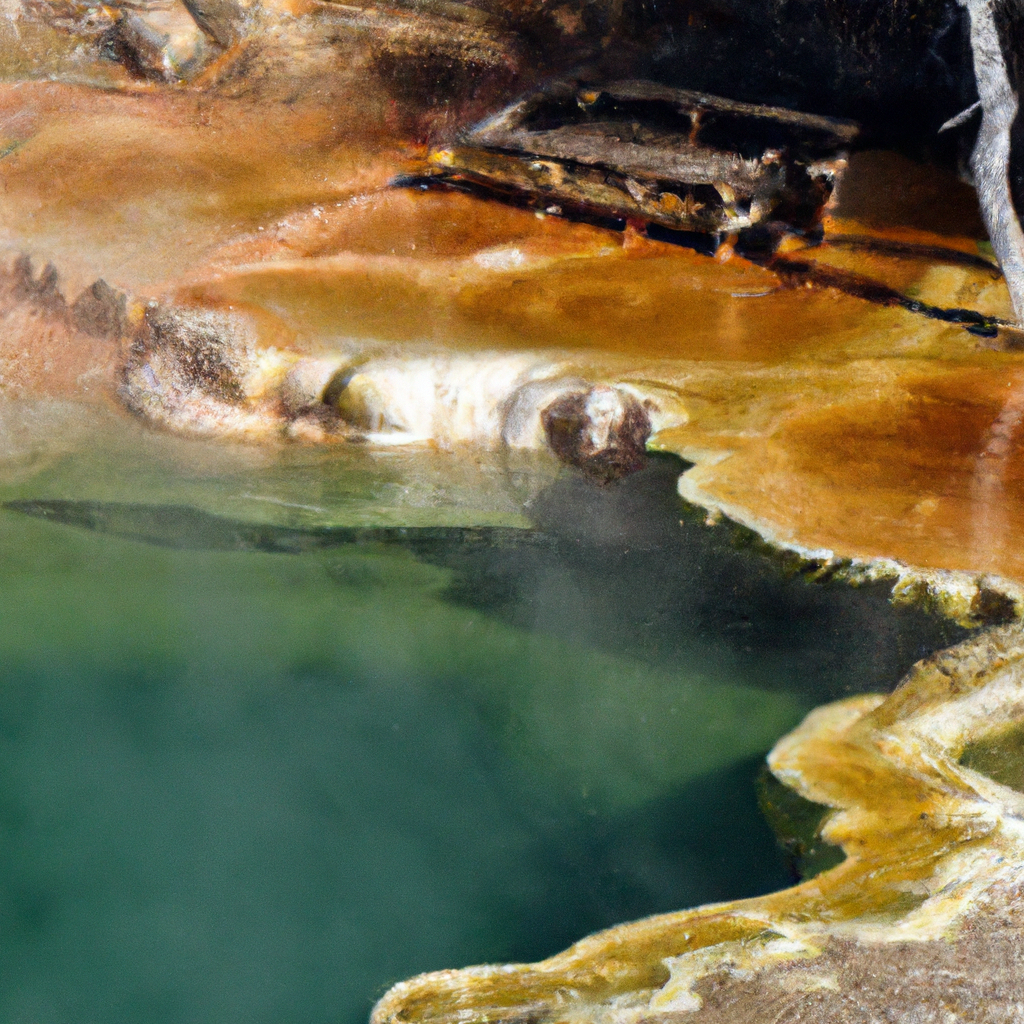
Geothermal Energy and Hot Springs
Harnessing Geothermal Energy
Hot springs not only serve as natural attractions but also hold immense potential as a source of renewable energy. Geothermal power plants harness the heat generated by hot springs to produce electricity. This process involves drilling deep into the earth to access the underground geothermal reservoirs. The heat from the hot springs’ water is used to generate steam, which drives turbines to produce electricity. By utilizing geothermal energy, hot springs can contribute to the transition towards cleaner and more sustainable energy sources.
Hot Springs in Renewable Energy
The utilization of hot springs in renewable energy systems extends beyond electricity generation. Geothermal energy can also be used for heating and cooling applications in residential and commercial buildings. The warm water from hot springs can be channeled into district heating systems, providing a reliable and energy-efficient source of heat. Additionally, the cooling properties of hot springs can be utilized for air conditioning, reducing the reliance on conventional cooling systems and minimizing the environmental impact of temperature regulation.
Environmental Benefits
Harnessing geothermal energy from hot springs offers a range of environmental benefits. Geothermal energy is a clean and renewable energy source, producing minimal greenhouse gas emissions compared to fossil fuel-based energy generation. By tapping into the geothermal potential of hot springs, communities can reduce their reliance on non-renewable energy sources and contribute to the global efforts to combat climate change. Furthermore, the utilization of geothermal energy can help to reduce overall energy consumption and promote energy independence, fostering a more sustainable future for generations to come.
Future Prospects for Hot Springs
Discoveries and Preservation Efforts
The exploration and discovery of new hot springs continue to captivate researchers and enthusiasts alike. With advances in technology and understanding of geological processes, scientists are constantly uncovering new geothermal hot spots and hidden treasures. These discoveries provide opportunities for further research, preservation, and exploration, ensuring that the stories and mysteries of hot springs are not lost to time.
Tourism and Economic Potential
The future of hot springs as premier tourist destinations and economic drivers looks promising. The demand for wellness tourism, nature-based experiences, and sustainable travel has been on the rise, and hot springs align perfectly with these trends. As more people seek authentic and enriching travel experiences, hot springs offer a unique opportunity to connect with nature, indulge in relaxation, and experience the cultural heritage associated with these natural wonders. With careful planning and sustainable management, hot springs can continue to thrive as key players in the tourism industry, benefiting the local economy and preserving the natural and cultural riches they possess.
Expanding Knowledge and Research
As hot springs continue to captivate researchers and scientists, there is a growing need for further knowledge and research. The complex geological processes and the intricate interplay of ecosystems in hot spring regions present fascinating opportunities for scientific exploration. By studying the dynamics of hot springs, researchers can gain insights into Earth’s geological processes, deepen our understanding of sustainable energy sources, and uncover the potential medicinal benefits associated with these natural wonders. The expansion of knowledge and research in this field will enable us to make informed and responsible decisions regarding the preservation and utilization of hot springs.
